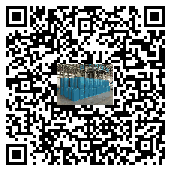Plastic Paint Dispersants: The Technological Magic That Gives Plastic Surfaces a Uniform Coating
Behind the matte finish of car interiors, the pearlescent effect of appliance exteriors, and the colorful coatings of consumer
electronics products lies a chemical wizard known as "plastic paint dispersants." Through precise microscopic manipulation,
they enable pigments, fillers, and resins to seamlessly blend within a liquid, ultimately endowing plastic products with a
long-lasting, vibrant appearance and exceptional performance.
I. The Core Role of Dispersants: Solving Three Major Challenges in Plastic Coating
Pigment Agglomeration Eliminator
Pigment particles (such as carbon black and titanium dioxide) in plastic coatings easily aggregate due to surface energy
differences, resulting in visible spots or sedimentation. Dispersants adhere to the pigment surface through anchoring groups
(such as carboxylic acid and phosphate groups) within their molecular structure, forming a charged protective layer or polymer
adsorption film. For example, in PP plastic coatings, UNIQ® SPERSE 634S dispersant, through its specialized solvating segments,
stably controls the fineness of conductive carbon black to below 10μm. Even after seven days of heat storage, it exhibits no
precipitation, completely eliminating the colorant delamination problem often associated with traditional dispersants.
Resin Compatibility Bridge
The polarity difference between plastic substrates (such as PVC and ABS) and coating resins often leads to phase separation.
Dispersants, through their amphiphilic structure (hydrophilic and hydrophobic ends), create an interfacial transition layer,
significantly improving system compatibility. For example, in PVC processing, RJ-1800 hyperdispersant, through its specific
anchoring groups, strongly bonds with calcium carbonate fillers, increasing the filler content of PVC pipes by 20% while
maintaining melt flowability and preventing bubble defects during processing.
Rheological Properties Controller
Dispersants can reduce coating viscosity by 30%-50%, enabling high-filler systems to maintain excellent workability. In
automotive bumper coatings, acrylic dispersants prepared using controlled radical polymerization (RAFT) technology, with
their regular molecular chain structure, reduce system viscosity while improving the thixotropic index, ensuring no sag on
vertical surfaces.
II. Technology Upgrade: From "Passive Dispersion" to "Intelligent Control"
Controlled Flocculation Technology
New generation dispersants (such as DISUPER S32) utilize a hyperbranched polymer structure to form a controlled
three-dimensional network between pigments. This "intelligent flocculation" mechanism enables coatings to achieve both
anti-settling and anti-flooding properties: in automotive topcoats, the difference in settling velocity between carbon black
and titanium dioxide has been reduced from 0.8 mm/h to 0.05 mm/h, while simultaneously improving grinding efficiency
by over 30%.
Breakthrough in Nanoscale Dispersion
Core-shell dispersants have emerged for novel pigments such as quantum dots and nano-TiO₂. Their core provides strong
adsorption, while the shell imparts steric hindrance, enabling nanoparticle dispersion stability for over six months. In
photovoltaic backsheet coatings, this technology increases light transmittance by 40%, meeting the demands of
next-generation display technology.
Green Transformation
Bio-based dispersants (such as cardanol-modified products) have a biodegradability rate of over 90%, complying with
EU EC 648/2004. A plant-based dispersant developed by a company reduces VOC emissions by 65% while maintaining
performance, promoting environmentally friendly plastic coatings.
III. Typical Application Scenarios
Automotive Interior Coatings
In low-gloss instrument panel coatings, dispersants can improve 60° gloss from 75 to 92 by adjusting the pigment particle
size distribution (D50 < 5μm) while eliminating color floating. The use of UNIQ® SPERSE 634S dispersant increases the
thermal storage stability of conductive carbon black pastes in CPO resin systems by five times, meeting the stringent
weathering requirements of the automotive industry.
Pearlescent Coatings for Appliance Exteriors
Mica titanium pearlescent pigments must be evenly dispersed in the resin to achieve a rainbow effect. Dispersants prevent
mica flakes from overlapping through steric hindrance, keeping the coating's reflectance angle variation within ±2°. A case
study of a refrigerator panel coating demonstrated that the use of a new dispersant reduced the pearlescent color difference
ΔE from 3.2 to 0.8, meeting the appearance standards of high-end home appliances.
High-Transparency Coatings for 3C Products
In the transparent coating of smartphone midframes, dispersants must simultaneously address the conflict between pigment
dispersion and resin transparency. Through molecular design, pigment particle sizes are reduced to <200nm, combined with
a low-refractive-index resin, resulting in a coating transmittance exceeding 92% and a hardness of 3H, meeting the dual
demands of aesthetics and durability in the consumer electronics industry.
IV. Future Trends: From "Single Function" to "Synergistic Enhancement"
Multifunctional Integration
New-generation dispersants are integrating multiple functions, including wetting, leveling, and anti-settling. A zwitterionic
dispersant developed by a company can replace three traditional additives in architectural coatings, reducing costs by
25% while improving storage stability.
Intelligent Design
Optimizing the dispersant structure through molecular simulation technology achieves "multiple benefits with one agent."
For example, a phosphate-based dispersant developed for waterborne epoxy primers maintains strong adsorption in alkaline
systems with a pH of 8-10, extending the shelf life of zinc dust anti-corrosion coatings from 3 months to 18 months.
Nanocomposite technology
Introducing inorganic nanoparticles (such as SiO₂) into the dispersant structure can simultaneously enhance the coating's
wear resistance and self-cleaning properties. Experimental data shows that automotive wheel coatings using nanocomposite
dispersants improve wear resistance by 40% and reduce contact angles to below 15°, achieving easy-to-clean properties.
From automated spray painting lines in automotive factories to precision coatings for consumer electronics, plastic paint
dispersants are driving plastic surface treatments towards high performance and environmental friendliness through continuous
technological innovation. This microscopic chemical magic not only reshapes the aesthetic value of plastic products but also plays
an irreplaceable and critical role in the precision chain of industrial manufacturing.


